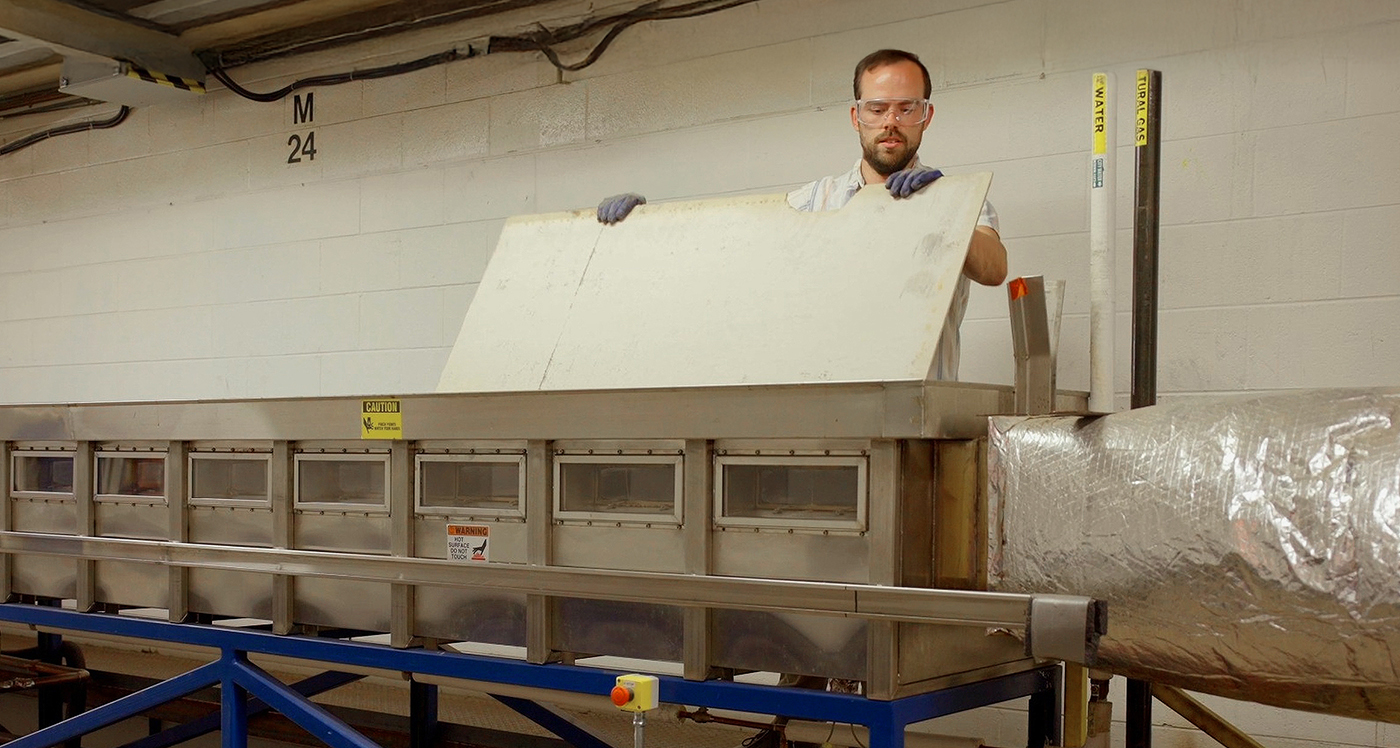At Johns Manville, protecting people and communities begins with rigorous product testing. Our Fire Tunnel Testing Lab plays a critical role in evaluating how building materials perform when exposed to flame and smoke.
The lab’s tunnel system measures two vital factors: how quickly flames spread across materials and how much smoke is generated. These insights help JM ensure that insulation, polyiso foam, spray foam, facers, and other building products meet strict fire performance standards before they ever reach the field.
This testing isn’t just about compliance—it’s about advancing safer, more climate-conscious solutions. By developing materials that resist fire more effectively, we help create safer indoor environments, reduce risk for building occupants, and support sustainability goals across the built environment.
Watch the full video: Fire-Resistant. Future-Ready.

Ever wondered how building materials hold up in a fire? At JM, we put them to the test—literally. Step inside our fire tunnel testing lab to see how we test our products against fire. At Johns Manville, safety isn’t just a standard—it’s part of who we are. Our fire tunnel testing lab puts materials like fiberglass, polyiso foam, spray foam, and facers through rigorous evaluations to understand how they perform under fire conditions. These tests measure: -How quickly flames spread across surfaces -How much smoke a material generates -How long protection can be sustained in real-world scenarios Why does this matter? Because every test we run translates into greater confidence for our customers, stronger protection for our communities, and newer, more sustainable products.

Ever wondered how building materials hold up in a fire? At JM, we put them to the test—literally. Step inside our fire tunnel testing lab to see how we test our products against fire. At Johns Manville, safety isn’t just a standard—it’s part of who we are. Our fire tunnel testing lab puts materials like fiberglass, polyiso foam, spray foam, and facers through rigorous evaluations to understand how they perform under fire conditions. These tests measure: -How quickly flames spread across surfaces -How much smoke a material generates -How long protection can be sustained in real-world scenarios Why does this matter? Because every test we run translates into greater confidence for our customers, stronger protection for our communities, and newer, more sustainable products.

